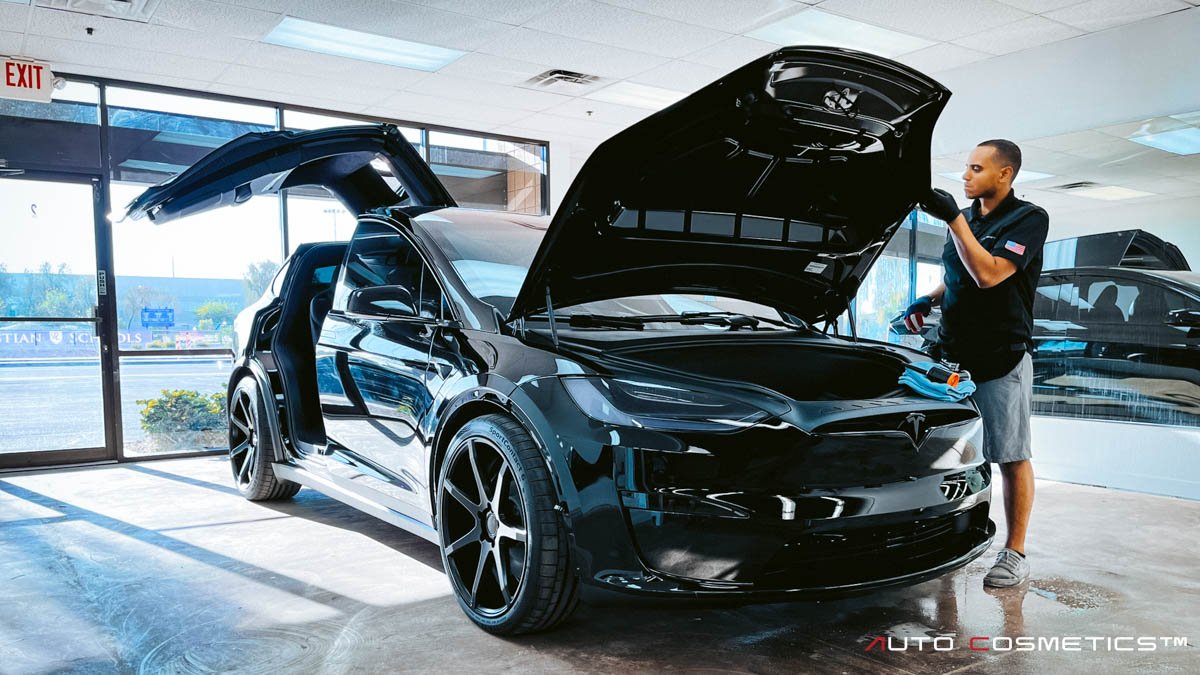10 Essential Paint Protection Film (PPF) Terms You Should Know

A. What is Automotive Paint Protection Film?
Automotive paint protection film (PPF), also known as clear bra, rock chip protection, or clear paint protection, is a thermoplastic urethane film applied to the painted surfaces of a new or used car to protect the paint from chips, scratches, and weathering. The film is nearly invisible and does not affect the appearance or color of the vehicle.
Understanding the terminology of the automotive paint protection film industry is important when considering options because it allows you to evaluate and compare different types of films. Different films offer different levels of protection, durability, and clarity. Knowing the terminology also helps you to make informed decisions about the features and benefits of each film and which one is best for your vehicle.
Auto Cosmetics Offers Expert Paint Protection Film Installations
LEARN MOREB. Understanding PPF Terms
PPF Terms are commonly and widely used by PPF installers, manufacturers, and consumers. Here are some key terms or phrases you should know as it relates to automotive paint protection film.
1. Edge Seal Technology
Edge Seal Technology enhances the seal integrity and protects the edges of automotive paint protection film from dirt, moisture, and other elements. The sealant creates an invisible barrier that prevents dirt and moisture from entering at the edge of the film, which helps maintain its long-term clarity and strength. Edge Seal Technology also provides an additional layer of protection against chemical damage caused by cleaners or environmental contaminants.
2. Gloss Finish
A gloss finish is a paint protection film designed to give the car surface a glossy shine and protect it from scratches, dings, and other damage. It usually has a high-gloss finish that will add an extra layer of protection to the car paint.
3. Matt Finish
Matte finish in automotive paint protection films is a non-reflective finish that reduces glare and adds a subtle, low-sheen look to the film. It also helps protect the underlying paint from UV rays, harsh weather conditions, and other environmental factors.
4. Polyurethane
Polyurethane is a plastic-type commonly used in automotive paint protection films. It provides a durable and flexible layer of protection against damage such as scratches, stone chips, and other debris. The film also helps to protect the paint from fading due to sun exposure.
5. Polyvinyl Chloride
Polyvinyl Chloride (PVC) is a type of plastic that is commonly used as a base material in automotive paint protection films. It provides a durable barrier against dirt, stones, and other debris that could damage the car's paint job. PVC offers excellent UV protection and is resistant to water, oil, grease, and chemicals.
6. Self-Healing
Self-healing paint protection film is a type of polyurethane film that can repair minor scratches and swirl marks on its own without any human intervention. This is possible because of a unique top coat with memory properties, allowing it to reform and heal within minutes of being scratched or scuffed. The self-healing properties are due to the material's elasticity, which enables it to expand or contract when heat or pressure is applied, restoring its original shape and condition. A self-healing film uses a combination of advanced materials, including elastomeric polymers resin, to help protect the surface of your vehicle from damage caused by road debris and everyday wear and tear
7. Solvent-Based Systems
Solvent-based systems are a type of automotive paint protection film that uses solvents as the base material. The solvent helps to create a strong bond between the film and the vehicle's surface, making it more durable and resistant to damage from environmental elements such as UV rays and road debris. This type of film is typically thicker than other protection films, offering additional protection for your vehicle's paint job.
8. Thermoplastic Urethane
Thermoplastic urethane (TPU) is a type of plastic used in automotive paint protection films. It is a highly elastic and flexible material, making it an ideal choice for protecting the paint from scratches and other damage caused by road debris. TPU also has excellent resistance to UV light, heat, and chemicals so it can protect the car's finish for many years.
9. Water-Based Systems
Water-Based Systems are a type of automotive paint protection film that is applied using a water-based adhesive. This type of paint protection film allows for easier installation, as it does not require any solvents or chemicals for application. It also provides excellent clarity, flexibility, and durability over time. Water-Based Systems generally last up to 7 years and offer superior UV resistance compared to traditional films.
10. Wrapping Edges
Wrapping the edges of a paint protection film means covering the edges or extremities of the protected area with a thin strip of film. This helps ensure that the protected area is completely covered and protected from scratches, chips, and other damage. It also gives a finished, clean look to the installation.
